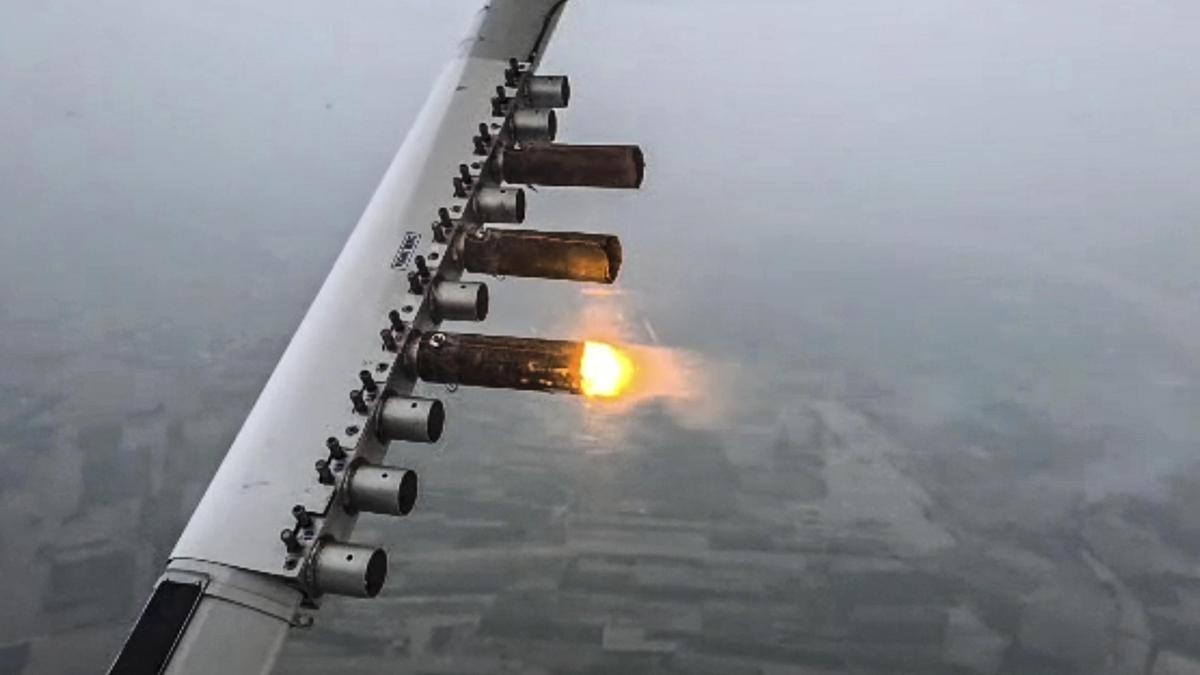Copyright thehindubusinessline

When Delhi’s skies turn a pallid grey and the Air Quality Index enters the “severe” zone, desperate measures often seem justified. This year, the city is preparing to attempt something unprecedented in India’s capital, which includes artificial rain through cloud seeding, a process that involves dispersing microscopic particles like silver iodide or salt into clouds to trigger precipitation. The initiative, led by the Delhi government in collaboration with IIT Kanpur, has now entered its first operational phase, with a trial conducted on October 28, 2025. The broader objective is to wash pollutants from the atmosphere, a technological intervention for an intractable crisis. Yet, while the announcement has stirred public curiosity and political optimism, it also raises deeper scientific and policy questions. Can cloud seeding genuinely deliver cleaner air in Delhi? What are the risks and lessons from other countries that have tried it? And, more importantly, what does this experiment reveal about the way India approaches complex environmental problems? Cloud seeding is neither novel nor magical. Developed in the 1940s, it is an atmospheric technique that enhances rainfall by introducing particles — typically silver iodide — around which moisture condenses. But its success hinges entirely on one condition: the presence of suitable clouds. But this key caveat, ‘if the conditions are right’, cannot be overstated. Seeding cannot conjure clouds; it can only augment existing ones. Delhi’s late-October atmosphere, dry and shallow, offers little for seeding to work with. The recent trial faced humidity of only 15-20 per cent, far below the 50-60 per cent typically required for effective droplet formation. Without sufficient cloud depth and liquid-water content, the dispersal of flares yields negligible results — a reminder that meteorology, not technology, sets the limits. Globally, cloud seeding has produced mixed outcomes. China’s large-scale operations in Xinjiang and Gansu and Thailand’s Royal Rainmaking Project show modest success under favourable conditions. Yet, long-term trials in Israel and the US, including the rigorously controlled Israel-4 (2013–2020) experiment, found no statistically significant increase in rainfall. In essence, cloud seeding remains a probabilistic intervention, not a guaranteed mechanism for rain-making. Delhi’s motivation, however, is not water augmentation but pollution mitigation. The rationale is that rainfall washes particulates and briefly lowers PM2.5 levels. But even natural monsoon rains offer only temporary relief; emissions quickly restore baseline pollution. Artificial rain, at best, provides a transient respite without addressing root causes such as vehicular exhaust, construction dust, biomass burning, and crop-residue fires. Hence, the recent exercise must be viewed as a scientific pilot, not a policy panacea. Its effects on rainfall, air quality, and spatial spread must be independently verified against meteorological baselines. Without such rigour, it risks becoming yet another “quick-fix” experiment; politically visible, scientifically inconclusive, and soon forgotten. Environmental dimension Beyond efficacy, cloud seeding introduces other considerations. The use of silver iodide, though typically in small concentrations, raises questions about chemical accumulation in soil and water bodies if used repeatedly. Long-term environmental monitoring is essential before large scale deployment. Equally, there are ethical issues about atmospheric manipulation: rainfall triggered in one region could hypothetically deprive neighbouring areas of moisture, a concern sometimes called “cloud stealing.” Although the physical evidence for such redistribution is weak, perceptions matter in environmental governance. Transparency about objectives, methods and monitoring will be key to maintaining public trust. The regulatory framework for weather modification in India remains embryonic. While some States such as Maharashtra and Karnataka have experimented with cloud seeding for drought mitigation, there is no national policy that standardises safety protocols, environmental assessments or liability norms. The Delhi pilot should therefore serve as a prompt for the Union Ministry of Earth Sciences and the IMD to develop a comprehensive weather-modification code, covering not just operational standards but also data sharing, chemical use, and post-operation impact assessments. The challenge surrounding cloud seeding is less scientific than political. The spectacle of aircraft releasing flares over a smog-laden city conveys an image of action but risks diverting attention from the systemic causes of Delhi’s pollution. Each winter, crop-residue burning across Punjab and Haryana, construction dust, vehicular emissions, and thermal power generation together trap particulate matter under stagnant inversion layers. Artificial rain cannot dissolve these drivers; at best, it offers fleeting relief before pollution levels rebound. Experts thus warn against treating cloud seeding as a substitute for sustained emission control. The resources spent on aircraft sorties, fuel, and silver iodide flares might yield greater dividends if directed towards structural measures, such as supporting farmers in residue management, enforcing tighter vehicle-emission norms, expanding electric public transport, and strengthening dust-control at construction sites. On September 25, the Delhi government and IIT Kanpur signed an MoU for five cloud-seeding trials, approved earlier by the Cabinet at a cost of ₹3.21 crore. The first sortie on October 28 dispersed silver-iodide salts over Burari and Karol Bagh, marking the start of a proposed winter-long experiment. This initiative should be seen as a scientific pilot, not a policy solution. Its results may be uncertain and its effects temporary, but if conducted transparently and evaluated rigorously, it can still generate valuable data. What matters is honest communication: cloud seeding can complement but never replace systemic emission control and public-health action. The writer is Fellow – Climate Co-Adaptation Lab at PlanAdapt, and freelance researcher Published on November 7, 2025



